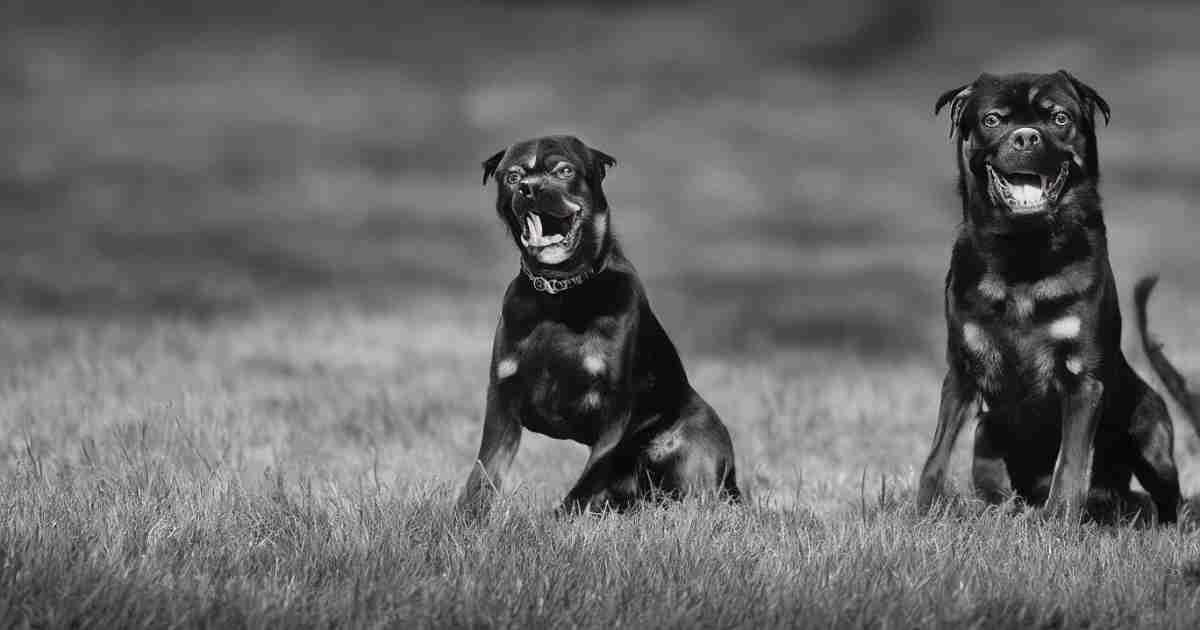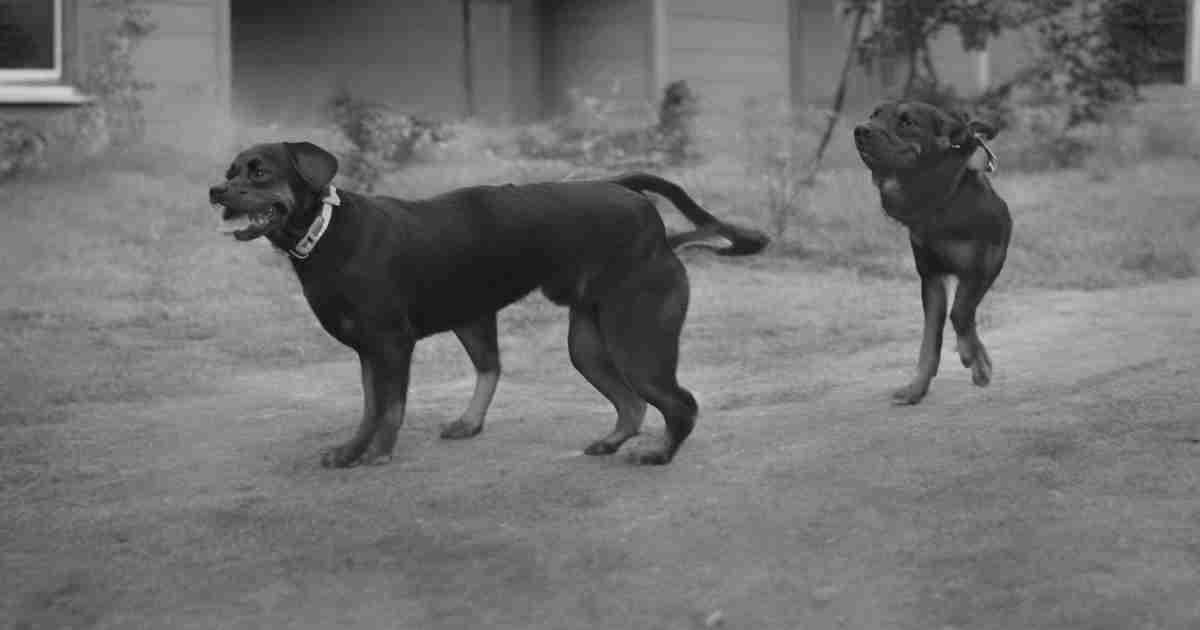Is your Rottweiler getting a little too protective of his territory? Growling when the mailman approaches, barking at neighbors walking by, or fixing unwelcome guests with an intense stare are all common territorial behaviors in this breed.
In this post, we’ll explore the top 100 signs of territoriality in Rottweilers so you can better understand your pup’s body language.
From subtle signals like lifted lips and rigid posture to more overt behaviors like lunging and chasing, we’ve got the complete guide to Rottweiler territorial instincts. Read on to become an expert at decoding your dog’s desire to defend his domain!
100 Behavioral Signs of Rottweiler Territorial Instincts
Rottweilers are a breed known for their strong guarding instincts. This protective nature can manifest itself through territorial behaviors aimed at keeping strangers or intruders away from a Rottweiler’s home and family.
While some territoriality is normal, excessive barking, growling, or aggression could signal a problem.
Understanding the subtleties in your Rottweiler’s body language is key to identifying signs of territoriality.
Here are 100 behavioral signs of rottweiler territorial instincts indicators that your Rottie may be feeling the urge to defend his territory:
Warning Signs
These early cues suggest your Rottweiler is feeling territorial but is not actively aggressive yet:
- Rigid body posture – Standing very still with tense muscles.
- Erect tail – Tail held high and upright.
- Ears pricked forward – Ears rotated forward to pick up any sounds.
- Intense stare – Fixed, unwavering gaze.
- Lifted lips – Subtly raising the upper lip to expose teeth.
- Low growl – Guttural growl from deep in the chest.
- Barking – May bark at perceived intruders.
- Hackles raised – Hair standing up along the dog’s back.
- Marking – Urinating small amounts to scent mark territory.
- Pacing – Repetitive walking along a boundary like a fence line.
Mild Aggression
These behaviors indicate your Rottweiler is actively defending his territory but without full-on aggression:
- Barking – Loud, frequent barking at strangers.
- Growling – More intense, louder growling.
- Snapping – Air snapping without making physical contact.
- Advancing – Moving toward an intruder while barking/growling.
- Blocking – Physically blocking entrances/exits.
- Circling – Walking around the perimeter of their territory.
- Stalking – Following/tracking the intruder’s movements.
- scratching/digging – Frantically scratching and digging near fences or boundaries.
- Pushing/leaning – Pushing body against owner or intruder.
- Nipping – Quick warning nip that does not break the skin.
Overt Aggression
These are clear signs your Rottweiler aims to chase, intimidate, or harm the intruder:
- Biting – Hard bites that break the skin.
- Charging – Running at full speed toward the intruder.
- Chasing – Chasing intruders away from territory.
- Snarling – Baring teeth while growling.
- Lunging – Lurching forward trying to bite.
- Jumping – Jumping up toward a person aggressively.
- Body slamming – Jumping up to hit with their body.
- Grabbing – Grabbing clothing or body parts forcibly.
- Pushing – Forcefully shoving away an intruder.
- Guarding – Physically blocking access to rooms, objects, and owners.
Anxious Behavior
These behaviors suggest your Rottweiler is feeling conflicted/anxious about guarding territory:
- Panting
- Licking lips/nose
- Yawning
- Whining
- Shaking off
- Avoiding eye contact
- Freezing – Sudden immobility
- Hiding
- Repetitive behaviors – Licking paws, pacing, circling.
- Shedding – Can shed more when anxious.
Calming Signals
Your Rottweiler may use these behaviors to reassure others he is not a threat:
- Sniffing the ground
- Turning head away
- Looking away
- Sitting
- Lying down
- Yawning
- Blinking
- Licking lips
- Smacking lips
- Shaking off
- Slow wagging tail
What To Do
If your Rottweiler is displaying frequent or intense territorial aggression, here are some tips:
- Avoid punishing – This can make the behavior worse.
- Socialize early & often – Get them comfortable with strangers.
- Train a strong “leave it” – Redirect their attention when triggered.
- Desensitize slowly – Use positive counterconditioning.
- Provide plenty of exercise & mental stimulation – A bored Rottie is more likely to guard.
- Use baby gates/crates – Limit access to guarded areas.
- Consult a vet – Rule out pain/medical causes.
- Seek help from an experienced trainer/behaviorist for more guidance if the problem persists.
With time, consistency, and positive methods, you can curb excessive territorial behavior and help your Rottweiler feel less compelled to guard his domain.
Patience and compassion go a long way in redirecting this breed’s protective tendencies to more appropriate channels.
Conclusion
Territorial behavior is common in the Rottweiler breed, stemming from their history as guard dogs protecting livestock.
While some territorial traits are normal, excessive aggression demands attention. Learning the subtle body language cues that telegraph your Rottweiler’s territorial instincts allows you to intervene early and redirect him before problematic behaviors become entrenched.
With dedication and positive training, you can shape more socially acceptable behaviors in your Rottie and still allow him an outlet for his natural guarding tendencies.
Pay attention to your dog’s unique signals, stay calm and consistent, and get professional help if needed.
You’ll soon be able to tell the difference between manageable protective instincts and true aggression requiring immediate action in your beloved Rottweiler.
Frequently Asked Questions
Q: At what age do Rottweilers become territorial?
A: Rottweilers often begin exhibiting territorial behavior around 1-2 years old, as they mature. But signs can show up as early as 8 weeks in some dogs.
Q: Are male or female Rottweilers more territorial?
A: Territorial behavior is common to both sexes. Males may roam farther to patrol, while females tend to focus more on guarding family and home.
Q: Can neutering help curb territorial behavior?
A: Neutering may reduce urine marking and roaming in male dogs, but typically does not resolve territorial aggression by itself.
Q: What’s the best way to introduce a new baby, roommate, or pet to a territorial Rottweiler?
A: Go slow with supervised introductions, give lots of praise/treats for calm responses, and establish boundaries like crates or gates so your Rottie feels less compelled to guard his space.
Q: My Rottweiler is sweet inside but mean with strangers near our home – what should I do?
A: Territorial issues often only occur on home turf. Do training sessions on neutral ground, socialize them away from home, and use desensitization techniques to help them accept strangers near your property. Consistency is key!







